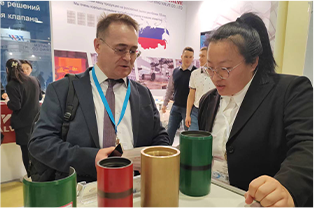- Afrikaans
- Albanian
- Amharic
- Arabic
- Armenian
- Azerbaijani
- Basque
- Belarusian
- Bengali
- Bosnian
- Bulgarian
- Catalan
- Cebuano
- Corsican
- Croatian
- Czech
- Danish
- Dutch
- English
- Esperanto
- Estonian
- Finnish
- French
- Frisian
- Galician
- Georgian
- German
- Greek
- Gujarati
- Haitian Creole
- hausa
- hawaiian
- Hebrew
- Hindi
- Miao
- Hungarian
- Icelandic
- igbo
- Indonesian
- irish
- Italian
- Japanese
- Javanese
- Kannada
- kazakh
- Khmer
- Rwandese
- Korean
- Kurdish
- Kyrgyz
- Lao
- Latin
- Latvian
- Lithuanian
- Luxembourgish
- Macedonian
- Malgashi
- Malay
- Malayalam
- Maltese
- Maori
- Marathi
- Mongolian
- Myanmar
- Nepali
- Norwegian
- Norwegian
- Occitan
- Pashto
- Persian
- Polish
- Portuguese
- Punjabi
- Romanian
- Russian
- Samoan
- Scottish Gaelic
- Serbian
- Sesotho
- Shona
- Sindhi
- Sinhala
- Slovak
- Slovenian
- Somali
- Spanish
- Sundanese
- Swahili
- Swedish
- Tagalog
- Tajik
- Tamil
- Tatar
- Telugu
- Thai
- Turkish
- Turkmen
- Ukrainian
- Urdu
- Uighur
- Uzbek
- Vietnamese
- Welsh
- Bantu
- Yiddish
- Yoruba
- Zulu
pump seating nipple
Understanding the Functionality and Importance of Pump Seating Nipples
In the world of petroleum engineering and oil production, various components play vital roles in ensuring the efficiency and safety of operations. One such crucial component is the pump seating nipple. Often overlooked, this small yet significant part is essential for the smooth functioning of pumping systems in oil and gas extraction.
What is a Pump Seating Nipple?
A pump seating nipple is a specialized fitting or connector used in downhole pumping systems. It serves as an attachment point for the pump, allowing it to be securely positioned within the wellbore. Typically fabricated from durable materials such as steel or alloy, these nipples are designed to withstand the high pressures and abrasive conditions found in subterranean environments.
Design and Function
The design of a pump seating nipple may vary depending on the specific requirements of the oilfield operation, but they generally feature a tapered or flanged configuration to facilitate a snug fit. This design not only supports the weight of the pump but also helps to prevent any lateral movement that could lead to operational inefficiencies or even equipment failure.
Once installed in the wellbore, the pump seating nipple acts as a base for attaching the pump. It ensures that the pump is held firmly in place, allowing for optimal performance while minimizing the risk of misalignment. Additionally, many pump seating nipples incorporate a locking mechanism that further secures the pump, making it resistant to vibrations and other forces encountered during operation.
Advantages of Using Pump Seating Nipples
1. Enhanced Stability One of the primary advantages of utilizing a pump seating nipple is the enhanced stability it offers. By providing a solid anchor point, these fittings help maintain the focus of the pump's action, thereby improving overall efficiency.
pump seating nipple

2. Prevention of Damage By securely holding the pump in position, pump seating nipples help prevent potential damage that could occur from excessive movement or misalignment. This protection extends the lifespan of both the pump and the nipple itself.
3. Ease of Maintenance Pump seating nipples are designed to facilitate easier maintenance operations. Their accessibility allows field personnel to quickly inspect, remove, or replace pumps when necessary without having to dismantle extensive portions of the well system.
4. Versatile Applications These nipples are not restricted to a single type of pump; rather, they can be tailored to accommodate a variety of pumping systems, making them versatile in applications across different oilfields.
Challenges and Considerations
Despite their advantages, the installation and maintenance of pump seating nipples involve certain challenges. For instance, ensuring proper alignment during installation is critical; improper placement can lead to operational inefficiencies. Additionally, the materials used must be carefully selected to resist corrosion and wear, as harsh chemical and physical conditions can result in premature failure.
Furthermore, as technology progresses, so, too, does the design of these components. Engineers must remain abreast of the latest advancements to ensure they are employing the most effective solutions for their pumping systems.
Conclusion
In conclusion, pump seating nipples play a critical role in the oil and gas industry, providing a secure foundation for downhole pumping systems. Their ability to enhance stability, prevent damage, and ease maintenance makes them indispensable in modern petroleum engineering. However, with these benefits come responsibilities—operators must pay careful attention to the installation and care of these components to ensure optimal performance. As the industry evolves, continued innovation in the design and materials of pump seating nipples will be fundamental to advancing extraction efficiency and safety. Utilizing this small yet significant piece of engineering can lead to profound improvements in the way we harness energy resources from the earth.
-
Tubing Pup Joints: Essential Components for Oil and Gas OperationsNewsJul.10,2025
-
Pup Joints: Essential Components for Reliable Drilling OperationsNewsJul.10,2025
-
Pipe Couplings: Connecting Your World EfficientlyNewsJul.10,2025
-
Mastering Oilfield Operations with Quality Tubing and CasingNewsJul.10,2025
-
High-Quality Casing Couplings for Every NeedNewsJul.10,2025
-
Boost Your Drilling Efficiency with Premium Crossover Tools & Seating NipplesNewsJul.10,2025







